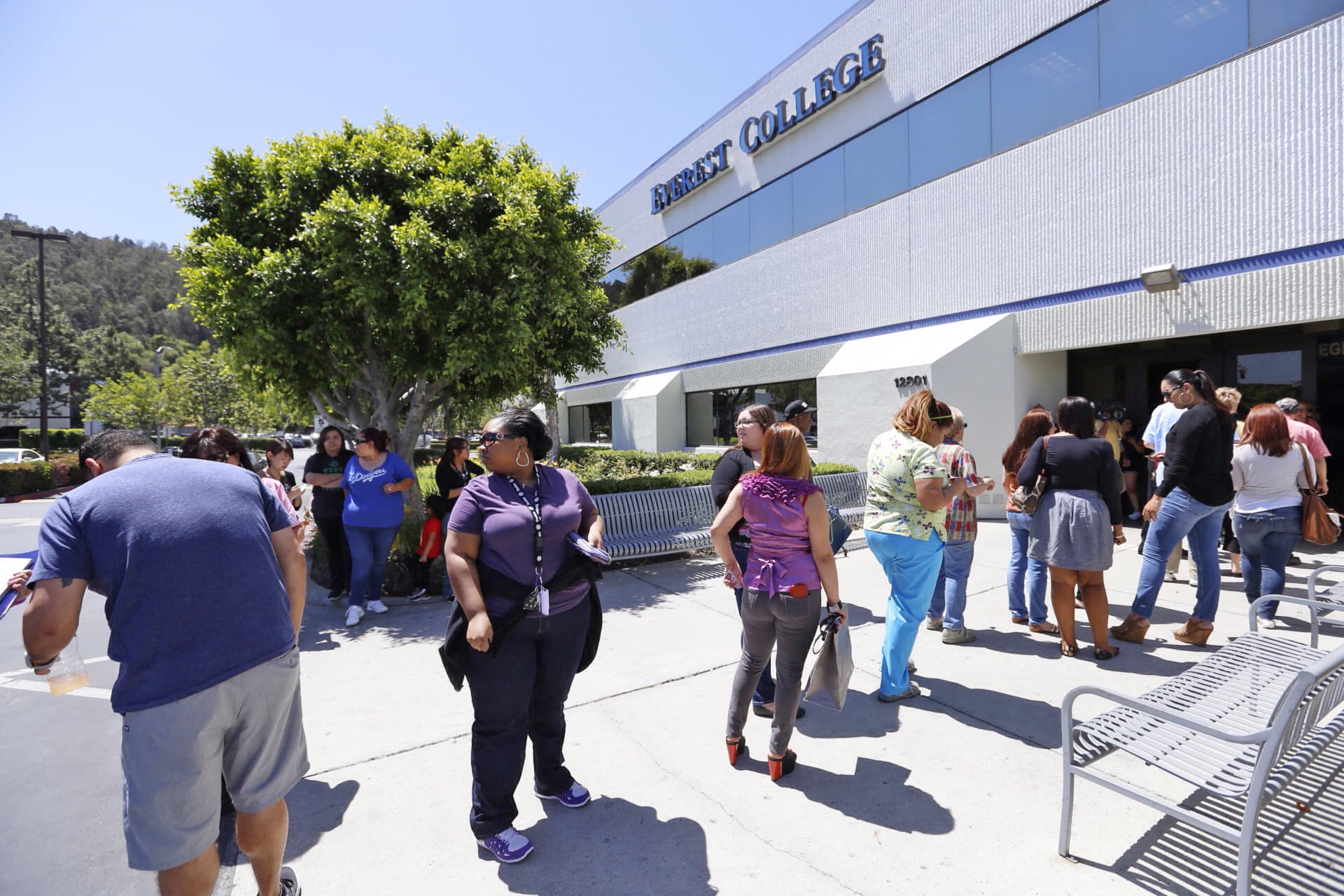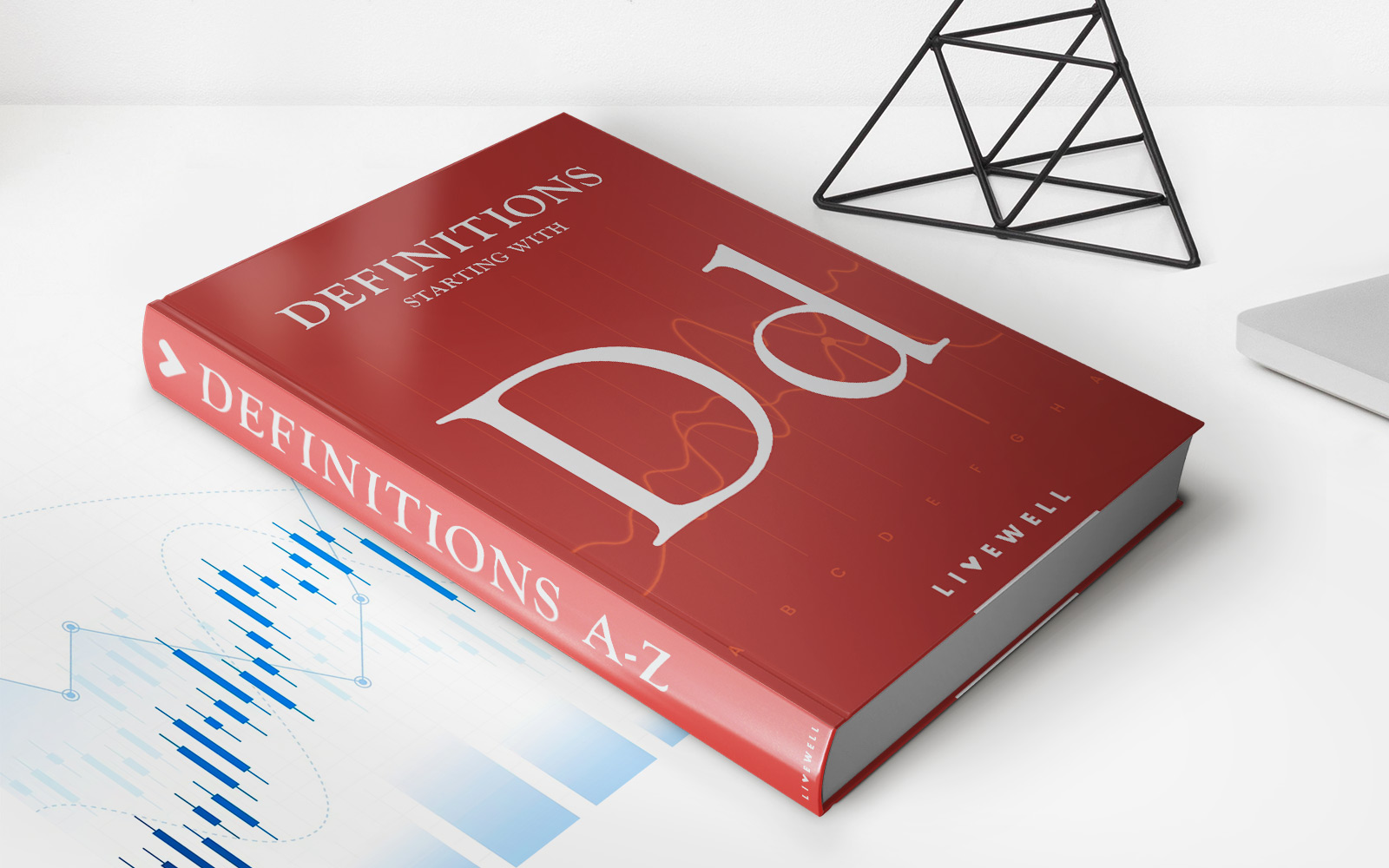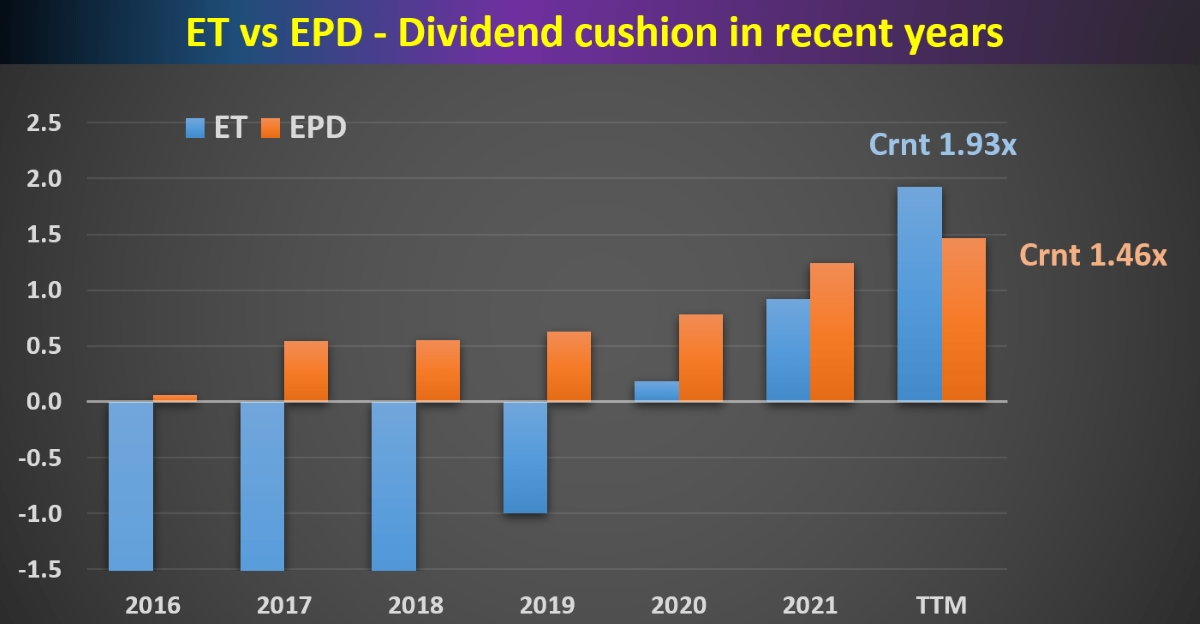

Finance
When Will Corinthian Loans Be Forgiven?
Published: February 17, 2024
Learn about the latest updates on Corinthian loans and find out when they may be forgiven. Stay informed with our finance news.
(Many of the links in this article redirect to a specific reviewed product. Your purchase of these products through affiliate links helps to generate commission for LiveWell, at no extra cost. Learn more)
Table of Contents
Introduction
Welcome to the complex world of student loans and the ongoing saga of Corinthian Colleges. For many former students of Corinthian Colleges, the question of when their loans will be forgiven looms large, impacting their financial well-being and future prospects. The journey toward loan forgiveness for these individuals has been fraught with challenges, delays, and uncertainty, creating a sense of frustration and anxiety.
In this article, we will delve into the intricate web of issues surrounding Corinthian loans, exploring the borrower defense to repayment rule, the current status of these loans, the hurdles faced in the pursuit of loan forgiveness, and potential solutions on the horizon. By gaining a comprehensive understanding of these elements, we can shed light on the complexities involved and offer insights into the path forward for affected borrowers.
Join us as we navigate through the maze of Corinthian loan forgiveness, aiming to provide clarity and guidance for those seeking relief from the burden of their student debt.
Background on Corinthian Colleges
Corinthian Colleges, once a prominent chain of for-profit colleges, operated numerous campuses across the United States, offering a variety of diploma and degree programs. At its peak, Corinthian Colleges catered to a significant number of students, many of whom pursued higher education with the hope of improving their career prospects and financial standing.
However, the reputation and practices of Corinthian Colleges came under intense scrutiny, leading to a series of legal and financial challenges. Allegations of deceptive marketing, misleading job placement statistics, and predatory lending practices tarnished the image of the institution, triggering investigations by federal and state authorities.
In 2015, facing mounting legal and financial pressures, Corinthian Colleges ceased operations and filed for bankruptcy. The closure left a trail of upheaval, impacting not only the students enrolled at the time but also those who had previously attended the institution and were burdened with substantial student loan debt.
The aftermath of Corinthian Colleges’ downfall cast a shadow over the students who had entrusted the institution with their educational and financial aspirations. Many found themselves grappling with the repercussions of their association with Corinthian, including the challenge of repaying student loans for programs that had failed to deliver the promised educational and career benefits.
The legacy of Corinthian Colleges continues to reverberate through the lives of former students, shaping the ongoing efforts to address the implications of their educational experiences and the financial burdens they carry.
The Borrower Defense to Repayment Rule
The Borrower Defense to Repayment rule serves as a crucial mechanism for students who have been misled or defrauded by their educational institutions to seek relief from federal student loan debt. This provision enables borrowers to apply for loan forgiveness based on claims of misconduct or deceptive practices by their schools, offering a potential lifeline for those grappling with the aftermath of attending institutions such as Corinthian Colleges.
Under the Borrower Defense rule, borrowers can present evidence to demonstrate that their school engaged in deceptive or illegal conduct, such as providing false or misleading information about job placement rates, accreditation status, or the nature of the educational programs offered. If successful, the borrowers may be eligible to have their federal student loans discharged, providing a measure of recourse for those who have been adversely affected by the actions of their educational institution.
The implementation and interpretation of the Borrower Defense rule have evolved over time, with adjustments made to the application process and the criteria for evaluating claims. The rule underwent significant revisions during the previous administration, leading to changes in the standards used to assess borrower defense claims and the level of evidence required to substantiate allegations of misconduct by educational institutions.
For many former Corinthian Colleges students, the Borrower Defense to Repayment rule represents a potential avenue for seeking redress for the harm they experienced as a result of their enrollment. The ability to pursue loan forgiveness under this provision offers a glimmer of hope for those burdened by student loan debt stemming from their association with a now-defunct and controversial institution.
As the landscape of higher education and student loan regulations continues to evolve, the Borrower Defense to Repayment rule stands as a crucial tool for addressing the challenges faced by borrowers who have been impacted by the deceptive practices of their educational institutions.
The Status of Corinthian Loans
The status of loans associated with Corinthian Colleges remains a topic of significant concern and uncertainty for the affected borrowers. Many individuals who attended Corinthian Colleges or its affiliated institutions continue to grapple with the financial obligations stemming from their student loans, despite the controversies and legal actions surrounding the institution’s practices.
Following the closure of Corinthian Colleges, the U.S. Department of Education took steps to address the predicament of students who had been impacted by the institution’s actions. This included implementing measures to provide relief for borrowers who had been enrolled in programs affected by the school’s misconduct, as well as instituting processes for evaluating and potentially forgiving federal student loans under the Borrower Defense to Repayment rule.
Despite these efforts, the resolution of Corinthian-related loans has been marked by complexities and delays, leaving many borrowers in a state of limbo as they await clarity on the fate of their student debt. The intricacies of navigating the loan forgiveness process, coupled with the evolving regulatory landscape, have contributed to a sense of frustration and apprehension among those seeking relief from their financial burdens.
Furthermore, the transfer of Corinthian Colleges’ campuses to other educational institutions and the subsequent management of the teach-out programs have added layers of complexity to the status of loans held by former students. The transition of students to alternative educational providers and the implications for their federal student loans have presented challenges in determining the appropriate course of action for borrowers seeking resolution.
Amidst these complexities, the lingering question of when Corinthian loans will be forgiven continues to loom large, impacting the financial well-being and future prospects of affected individuals. The ongoing efforts to address the status of these loans represent a critical aspect of the broader initiatives aimed at rectifying the repercussions of Corinthian Colleges’ actions on the lives of its former students.
Challenges and Delays in Loan Forgiveness
The pursuit of loan forgiveness for borrowers with ties to Corinthian Colleges has been riddled with a myriad of challenges and persistent delays, compounding the hardships faced by those seeking relief from their student loan obligations. These hurdles have contributed to a protracted and often frustrating journey for affected individuals, further exacerbating the financial and emotional toll resulting from their association with the defunct for-profit institution.
One of the primary challenges has been the intricate and evolving nature of the regulatory framework governing the process of seeking loan forgiveness, including the criteria and evidentiary standards required to substantiate claims under the Borrower Defense to Repayment rule. The shifting landscape of regulations and the associated administrative procedures have created a complex and at times bewildering environment for borrowers navigating the path toward potential relief from their student debt.
Moreover, the bureaucratic hurdles and administrative bottlenecks within the U.S. Department of Education have contributed to delays in the evaluation and adjudication of borrower defense claims, prolonging the uncertainty and anxiety experienced by those awaiting decisions on the fate of their loans. The backlog of pending claims and the resource-intensive nature of reviewing individual cases have further impeded the expeditious resolution of loan forgiveness requests.
Additionally, the transition of Corinthian Colleges’ campuses to other educational institutions and the subsequent management of teach-out programs have introduced complexities in determining the eligibility of borrowers for loan forgiveness, further complicating the process and contributing to delays in providing relief for affected students.
Furthermore, the legal and procedural challenges stemming from the bankruptcy proceedings of Corinthian Colleges have added layers of complexity to the efforts to address the status of loans and facilitate the forgiveness process, creating additional hurdles for borrowers in their quest for financial reprieve.
Collectively, these challenges and delays have underscored the arduous and protracted nature of seeking loan forgiveness for individuals impacted by the actions of Corinthian Colleges, highlighting the need for streamlined and expeditious mechanisms to address the financial burdens borne by affected borrowers.
Potential Solutions and Next Steps
Amidst the complexities and challenges surrounding Corinthian loans, there are potential solutions and next steps that offer hope for affected borrowers seeking relief from their student loan burdens. As the landscape of higher education and student loan regulations continues to evolve, several avenues may pave the way for addressing the predicament faced by individuals with ties to Corinthian Colleges.
One potential solution lies in the continued advocacy and support provided by consumer advocacy groups, legal aid organizations, and dedicated attorneys who offer guidance and representation to borrowers navigating the loan forgiveness process. These resources play a crucial role in empowering affected individuals, providing them with the necessary information and assistance to pursue relief from their student debt.
Furthermore, ongoing efforts to streamline and expedite the review and adjudication of borrower defense claims by the U.S. Department of Education represent a pivotal aspect of addressing the challenges and delays in the loan forgiveness process. By enhancing the efficiency and transparency of the evaluation procedures, the department can alleviate the burden on borrowers and facilitate timelier resolutions for those seeking relief.
Additionally, the potential for legislative and regulatory reforms aimed at fortifying borrower protections and enhancing oversight of for-profit institutions holds promise for addressing the broader issues stemming from the demise of Corinthian Colleges and similar entities. By enacting measures that bolster consumer safeguards and accountability within the higher education sector, policymakers can contribute to preventing future instances of misconduct and mitigating the impact on students and borrowers.
Moreover, the collaboration between federal and state authorities, educational institutions, and advocacy groups in disseminating information and resources to affected borrowers is instrumental in guiding individuals through the intricacies of seeking loan forgiveness and exploring alternative options for managing their student debt.
As borrowers affected by Corinthian loans navigate the complexities of the loan forgiveness process, the availability of comprehensive and accessible guidance, coupled with concerted efforts to address systemic shortcomings, can serve as catalysts for advancing the resolution of their financial predicament.
Conclusion
The journey toward Corinthian loan forgiveness has been marked by a labyrinth of challenges, delays, and uncertainties, underscoring the profound impact of the institution’s practices on the lives of its former students. The arduous pursuit of relief from student loan debt has tested the resilience and perseverance of those affected, highlighting the need for concerted efforts to address the complexities inherent in seeking loan forgiveness.
Despite the obstacles encountered, there exists a glimmer of hope in the form of potential solutions and ongoing initiatives aimed at alleviating the burdens borne by borrowers with ties to Corinthian Colleges. The advocacy and support provided by consumer organizations, legal advocates, and dedicated professionals play a pivotal role in empowering affected individuals and guiding them through the intricacies of the loan forgiveness process.
As the regulatory landscape continues to evolve, the potential for reforms and enhanced oversight holds promise for bolstering borrower protections and preventing future instances of misconduct within the higher education sector. By fostering collaboration and disseminating vital information, federal and state authorities, educational institutions, and advocacy groups can contribute to guiding borrowers toward viable pathways for addressing their student loan obligations.
While the road to Corinthian loan forgiveness may be fraught with complexities, the resilience and determination exhibited by affected borrowers, coupled with the support and advocacy of various stakeholders, embody the collective commitment to seeking just and equitable resolutions. The pursuit of relief from student loan debt is not merely a financial endeavor but a quest for fairness, accountability, and the restoration of hope for those impacted by the aftermath of Corinthian Colleges.
As the narrative of Corinthian loan forgiveness unfolds, it is imperative to recognize the human stories behind the statistics and regulations, acknowledging the profound impact on individuals striving to overcome the burdens imposed by their association with the defunct for-profit institution. Through collaborative efforts, informed advocacy, and a steadfast commitment to addressing systemic challenges, the potential for meaningful progress in the journey toward Corinthian loan forgiveness becomes an attainable reality.














